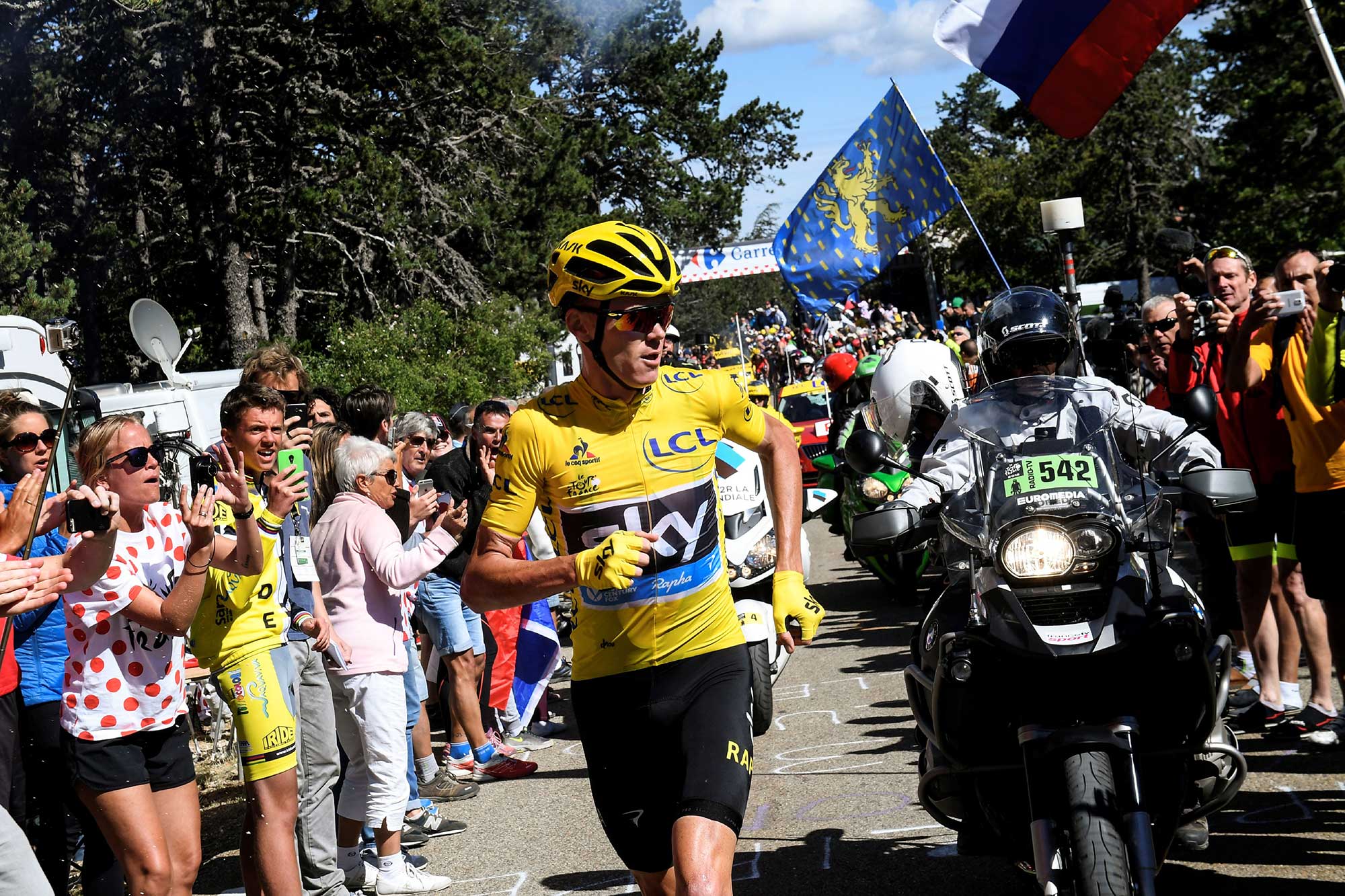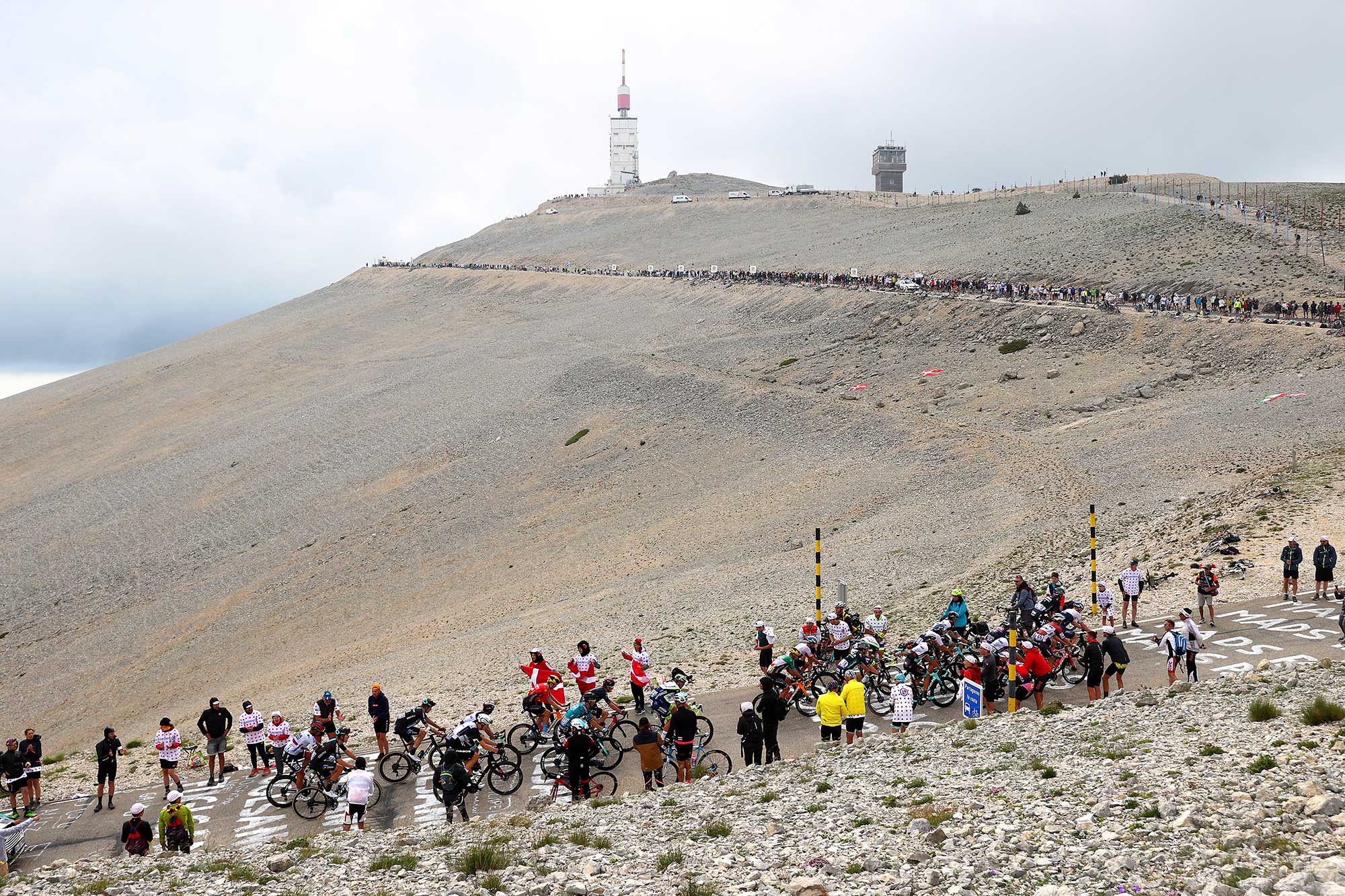
The 2025 edition of the Tour de France will mark the nineteenth time that the peloton will go head-on with Mont Ventoux.
It's a mountain with seemingly endless slopes that weave across the barren and lifeless landscape, setting Ventoux apart from other iconic climbs to feature in the Tour.
When Ventoux appeared in 2021 with a spectacular double ascent, it culminated in Wout van Aert claiming a solo victory in the nearby town of Malaucène.
This stage also marked the first battle between two of the sport’s titans as Jonas Vingegaard locked horns with Tadej Pogačar - briefly distancing the Slovenian near the summit of the monster climb.
For 2025, the organisers have reverted to a summit finish - 12 years since a Tour stage last culminated at the top of the mythical peak.
However, Mont Ventoux is by no means the highest peak to grace the Tour, nor the longest or steepest. So why is it that cycling fans across the world will be earmarking this stage as one that can’t be missed?
Here’s everything you need to know about the 'Giant of Provence'.
Where is Mont Ventoux?
Situated in the region of Provence in the southeast of France, Mont Ventoux is located roughly 20km northeast of the town of Carpentras. While defined as being in the periphery of the Alps geographically, Ventoux is often seen as separate from the French Alps due to its isolated position.
As the crow flies, Mont Ventoux lies 120km southwest of Alpe d’Huez - another of the Tour de France’s iconic climbs.
Adding to its mythical nature, it protrudes from the surrounding lowlands, making it seem all the more daunting of a challenge to ascend by bike given its exposure to the elements.
As early as the 12th century, deforestation for shipbuilding in Toulon helped to create a harsh landscape of grey stone. Sheep herding in the years since has added to the lifeless landscape. It's only since the 1950s that reforestation programmes were introduced, with much of the mountain below 1500m now hidden by trees once again.
Nonetheless, the final few hundred metres to the peak remain like a scene from another planet. Limestone scree from consistent storms and freezing conditions ensures Ventoux looks like no other mountain to grace the Tour de France.
This lack of shelter on the upper slopes can often add an extra cruel twist to the challenge of ascending Ventoux.
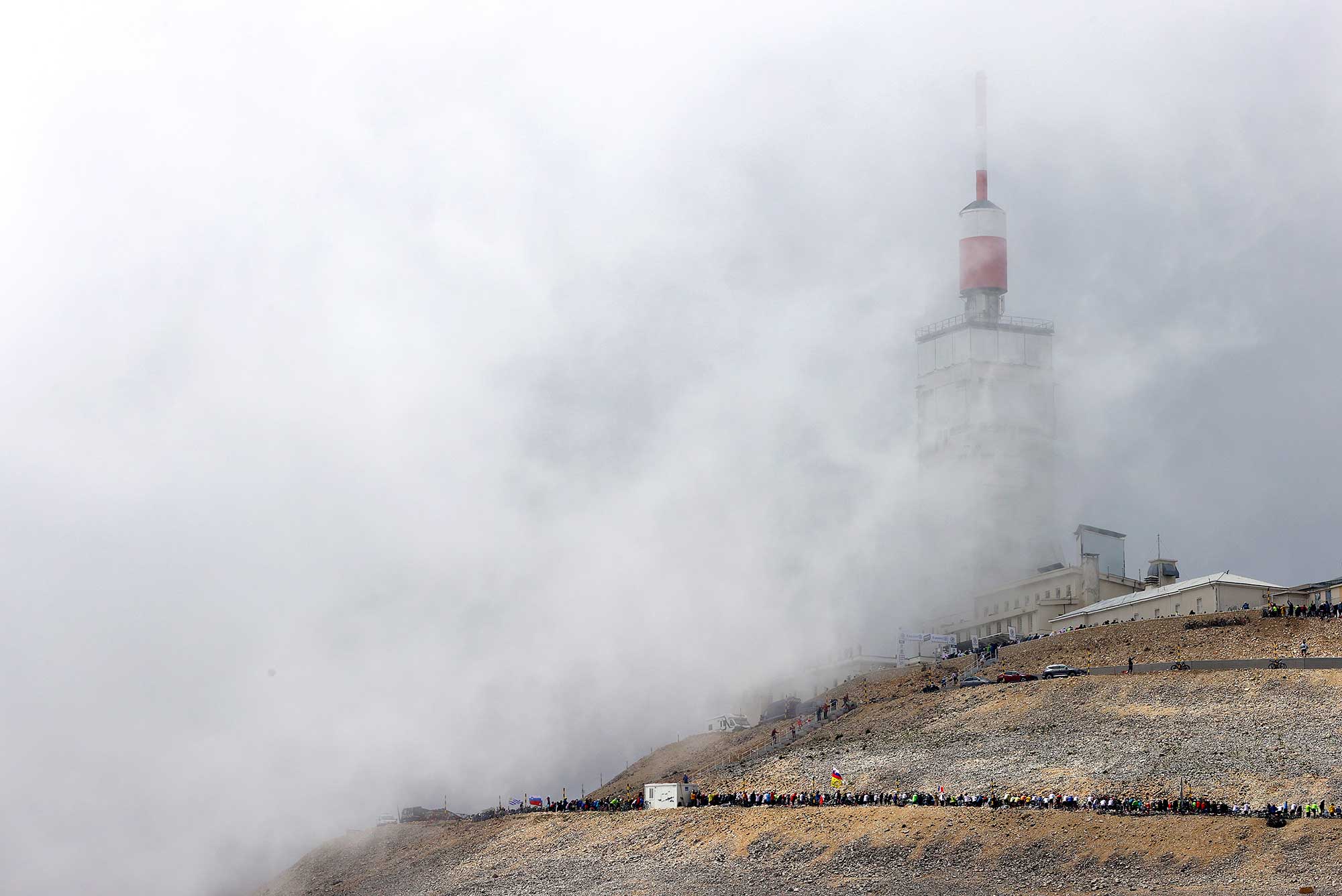
Once above the tree line, there’s no place to hide from the dazzling sunshine and intense heat. As Ben O'Connor told Cyclingnews in 2021, "I know what it feels like to be cooked in the sun, and I was cooked in the sun."
Then there is unrelenting wind - the mistral - that sits above 90km/h for more than two-thirds of the year. Hence why some say the mountain’s name originates from the French ‘venteux’ which means ‘windy’.
The bleak landscape juxtaposed with the glorious French summer sunshine can create a somewhat otherworldly scene.
How difficult is Mont Ventoux?
Aside from the rarity of Ventoux’s inclusion in La Grande Boucle making it such an iconic part of the race’s history, its difficulty also sets it apart from other climbs that the organisers turn to when they’re planning those five-star, Tour-defining stages.
The summit of Mont Ventoux sits at 1,910m. It can be climbed from three separate directions but has almost always been tackled from Bédoin - which it will be once more in 2025.
The most well-pedalled route rises 1,610m for 21.5km with an average gradient of 7.43%, however, there are several sections of this ascent which dramatically vary in gradient.
The first five kilometres can be considered a gentle warm-up for the struggle to come, not exceeding an average gradient above six per cent before kilometre seven.
A brief reprieve at kilometre six, with the gradient dipping to 3.1%, allows riders a moment to ready themselves before the lonely road kicks up for a second time.
The average slope for the next nine kilometres is relentless - between 8.6% and 10.5%.
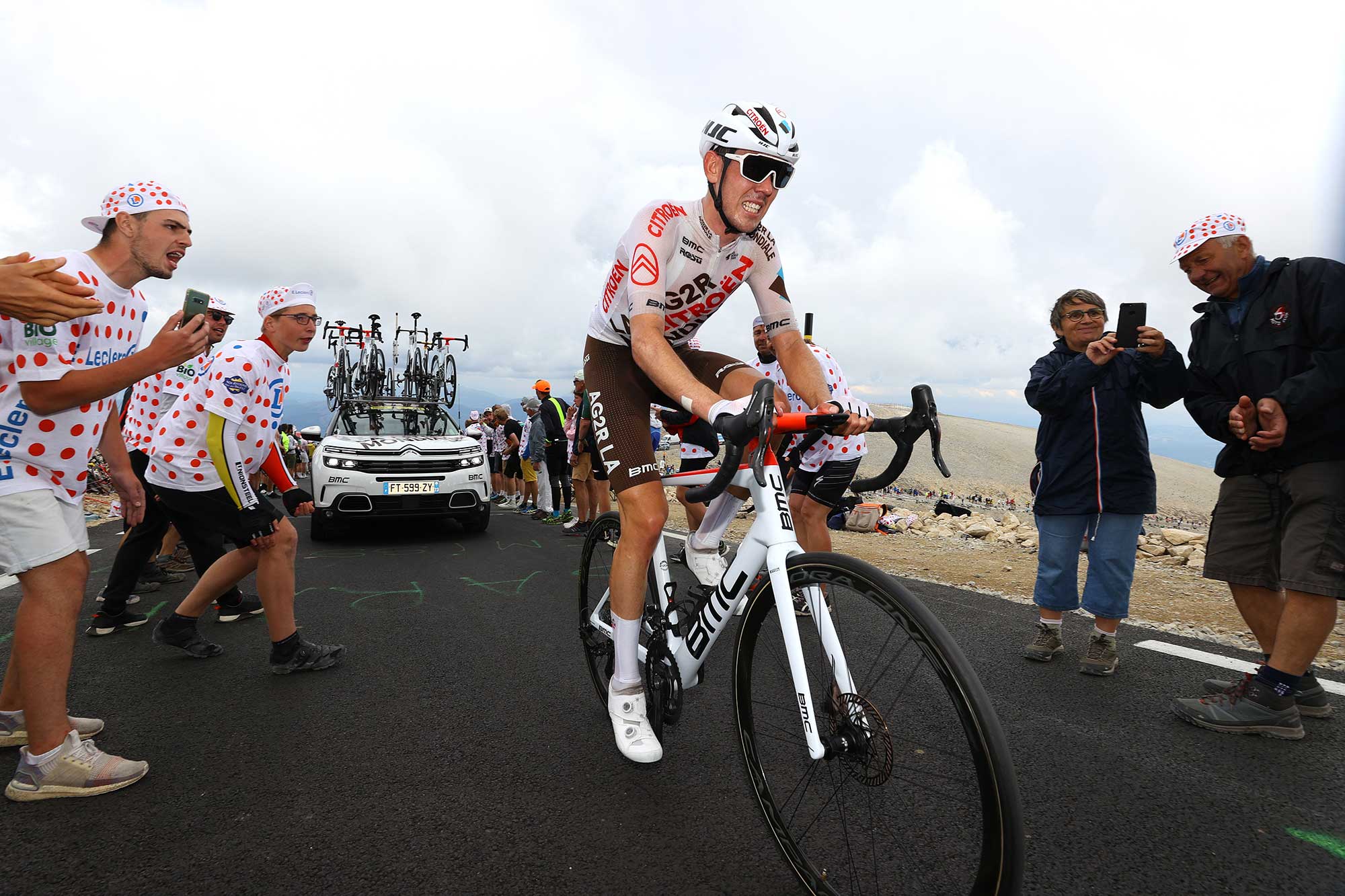
A second ‘plateau’ of six per cent gradients follow for a few kilometres before the needle is turned up once more as the summit comes into view.
The final three kilometres push every last ounce of energy out of the rider, jumping from 8.3% up to 10%.
Of the other two routes, the ride from Malaucène is similar in overall difficulty but with more frequent changes in gradient.
Meanwhile, the route from Sault has hardly been touched by pro cycling over the years. It’s longer than the other two ascents, at 26km, but shallower with only 1220m gained.
Why is Mont Ventoux so historic?
There isn’t one defining reason why Mont Ventoux has become a mainstay in Tour de France folklore. As mentioned earlier, it isn’t the highest peak to feature in the race, nor the steepest or longest. Yet, its harsh, otherworldly setting and mythical nature have left a mark on many riders’ careers, for better or worse.
Ventoux first graced the Tour de France route back in 1951 - via the route from Malaucène - with Lucien Lazarides the first rider to crest the top. A climb that organisers liked the look of, it returned 12 months later when Jean Robic tackled the Bédoin climb on his way to stage victory down in Avignon.
However, the climb left its first lasting mark on the race in 1955. Louison Bobet powered clear with the observatory in sight and was not seen again until the finish line 60 kilometres later.
His margin of victory was six minutes, all but wrapping up his third maillot jaune.
It wasn’t just the Frenchman’s GC grasp that was reinforced that day though, so too was Mont Ventoux’s presence within the fabric of the race. Several riders were put to the sword by the mountain's unforgiving conditions and, as would become even clearer in the years to come, their dicing gamble with primitive performance enhancements.
The ‘Bald Mountain’ has an uncomfortable link to cycling’s doping problem, with no clearer tie than the death of Tom Simpson on its upper slopes in 1967.
Simpson collapsed twice after being dropped by the lead group on stage 13 of the 54th edition of the race. He was pronounced dead by the time he was airlifted off the mountain, with amphetamines found his in jersey pockets.
A year after the British rider’s death, the earliest anti-doping measure was introduced at Le Tour when drug testing took place.
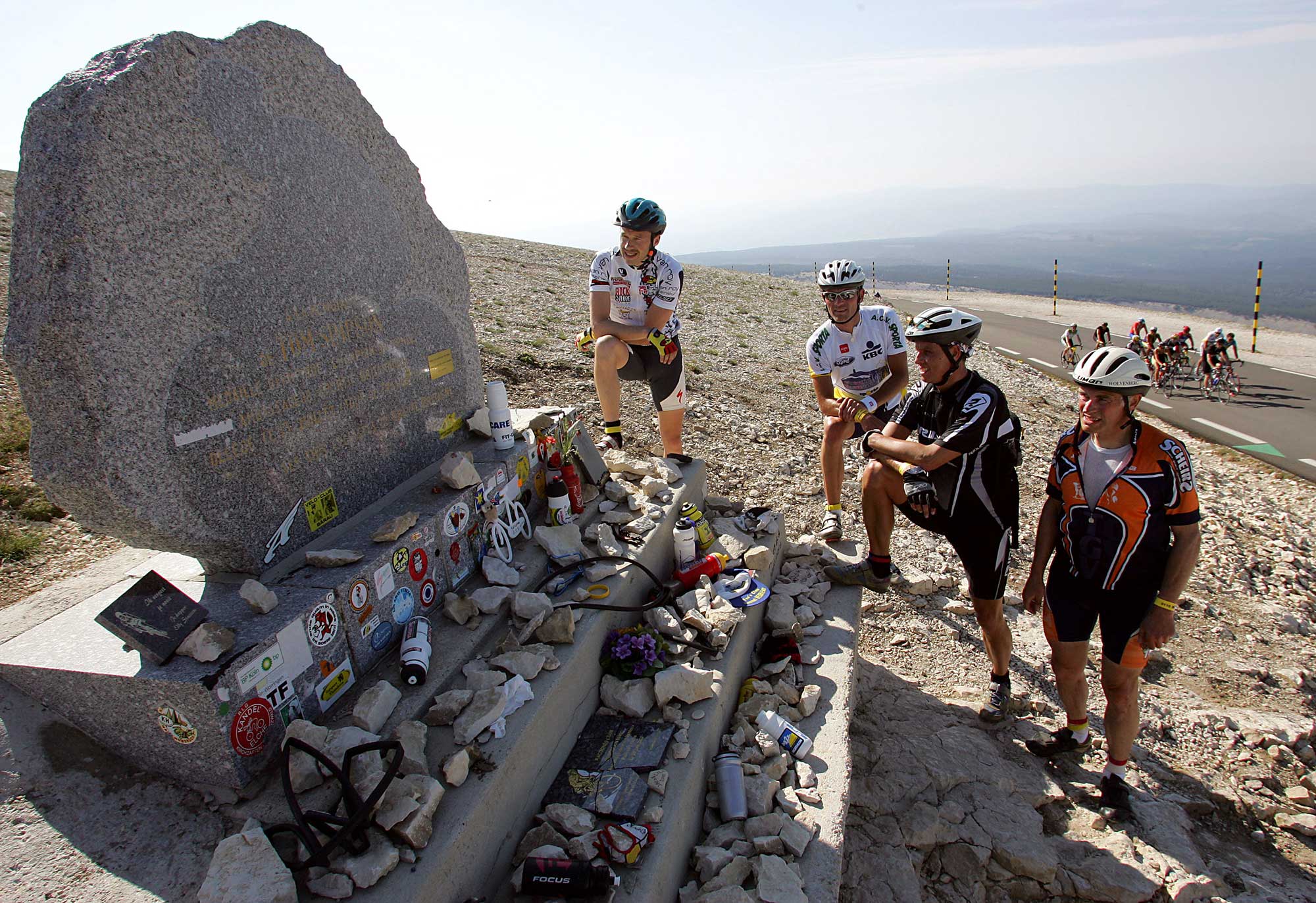
When the race next visited in 1970, Eddy Merckx powered past a monument erected in Simpson’s honour on his way to victory at the summit. Yet, perhaps one of the biggest testaments to Mont Ventoux’s status was that the Belgian had to be given oxygen in an ambulance after the finish. Uttering “No, it's impossible," as he crossed the line.
It chewed the Cannibal up and very nearly spat him out whole.
A hiatus of 13 years between 1974 and 1987 saw the mountain step back from its role of making or breaking yellow jersey tilts.
Yet when it returned, its effect was still there - even if Jean-François Bernard thought he’d got the better of the 'Giant of Provence'.
The Frenchman moved into the maillot jaune after storming the mountain time trial held on the climb and looked set to write his name into Tour’s roll of honour. That was until he haemorrhaged four minutes on the following stage, sinking to fourth in the standings. He could only recover enough for third on GC.
Italian rider Eros Poli won the stage with an emphatic 171km solo when Ventoux next featured on the route map in 1994 - and one of the few occasions it didn’t signal the stage finish.
However, it was another Italian who finished 10th that day raising his arms the next time a Tour stage finished at 1,900m - even if he wasn’t particularly happy about it.
Marco Pantani came to the line alongside Lance Armstrong in 2000, yet instead of duelling it out for the stage, Armstrong - the yellow jersey holder - gifted it to the Italian.
The Pirate was less than pleased by the gesture.
Armstrong may have regretted that generosity two years later when he could only muster third on the stage, won by Richard Virenque. "That mountain doesn't like me," the Texan - whose efforts would be struck through a decade later when he lost all of his Tour wins and was banned for life for doping - bemoaned afterwards.
When Chris Froome powered to victory in 2013, so dominant was his display that he faced comparisons with the now-outcast Armstrong. Yet for his controlled ascent of the mountain during his first yellow jersey-winning edition, leaving the likes of Alberto Contador and Nairo Quintana in his wake, he had to overcome obstacles beyond his control in 2016.
Breakaway specialist Thomas de Gendt may have won the stage that day - which finished 7km down the mountain at Chalet Reynard due to strong winds - but it was overshadowed by events in the GC pack.
The shortened stage meant the lower slopes were overwhelmed with fans and Froome, alongside Richie Porte and Bauke Mollema, collided with a TV motorbike amidst the chaos.
It resulted in one of the most iconic images in recent Tour history. Froome, in the maillot jaune, running up Ventoux’s slopes with no bike in sight.
The Team Sky leader initially lost the yellow jersey and two minutes on his rivals, only for the race officials to later reverse the time gaps and keep the Briton at the top of the standings.
